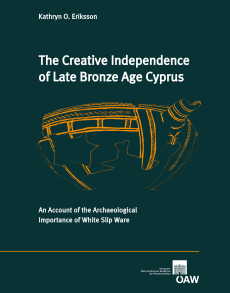Kathryn O. Eriksson
The Creative Independence of Late Bronze Age Cyprus
An Account of the Archaeological Importance of White Slip Ware
Reihe herausgegeben von Manfred Bietak
Reihe: Denkschrift der GesamtakademieThis volume attempts to present a comprehensive account of the historical developments in Cyprus which occurred during the period of the production of White Slip Wares (ca 1580–1180 BC). Using the Kitchen chronology for the Egyptian New Kingdom, which commences at 1540 BC, the study emphasizes the importance of the archaeological record and how context analysis allows the development of the relative chronology. This period witnesses the emergence of Cyprus within the political and economic interaction of the East Mediterranean. With special focus on White Slip pottery, the historical events outlined herein demonstrate that Cyprus grew into a vibrant, independent society from the early 16th century BC continuing into the 12th century BC. Throughout this time, Cyprus developed trade, cultural and diplomatic relations with the most powerful surrounding kingdoms. There is a focus on the role of Cypriot wares – especially White Slip, Base-ring and Red Lustrous Wheel-made – within the island and externally. A major role is given to White Slip which is represented as a chronological beacon in the analysis of events during the Late Bronze Age; a time when there are few historical references to the island and its people. With eight chapters, this comprehensive analysis of the material culture is accompanied by a historical account in which the period in Cyprus from 1580–1180 BC is divided into seven chronological periods, based on Åström”s original chronology. The broad ranging historical discussion in Chapter VII seeks to demonstrate the interactions between Cyprus and the surrounding societies during this period. The evidence is interpreted here to show that the island”s leaders were skilful in achieving a balance between the interests of the various civilizations: the Minoan and Mycenaean from the Aegean; the Canaanite groups; the Hittite empire and of course the Egyptians. The evidence shows that independent Late Bronze Age Cyprus established extensive trade and diplomatic links with these societies – notwithstanding the various conflicts between them. The Cypriots managed this in the context of complex and changing interrelationships between the empires during very turbulent times. In so doing, Late Bronze Age Cyprus managed to develop the creative skills of its people – especially as reflected in the range, production and extensive distribution in many lands of its ceramic wares (such as White Slip).

